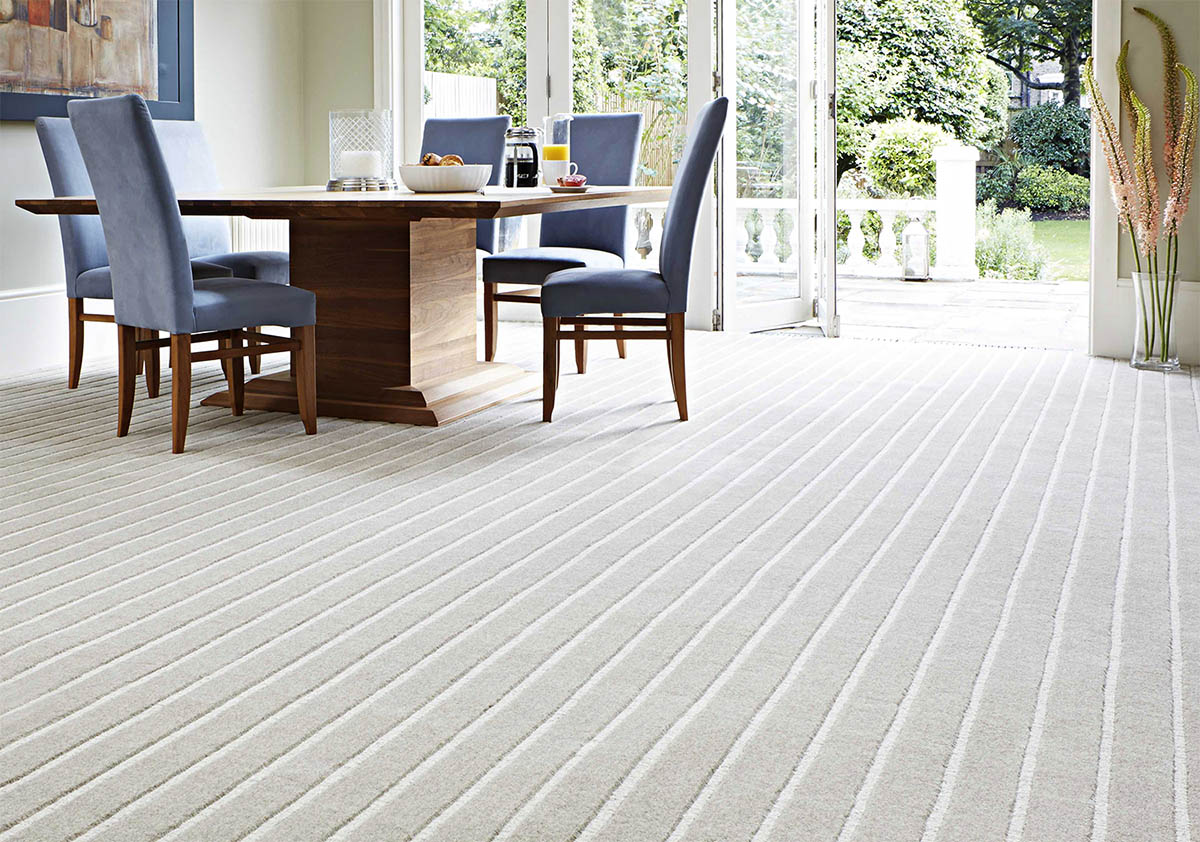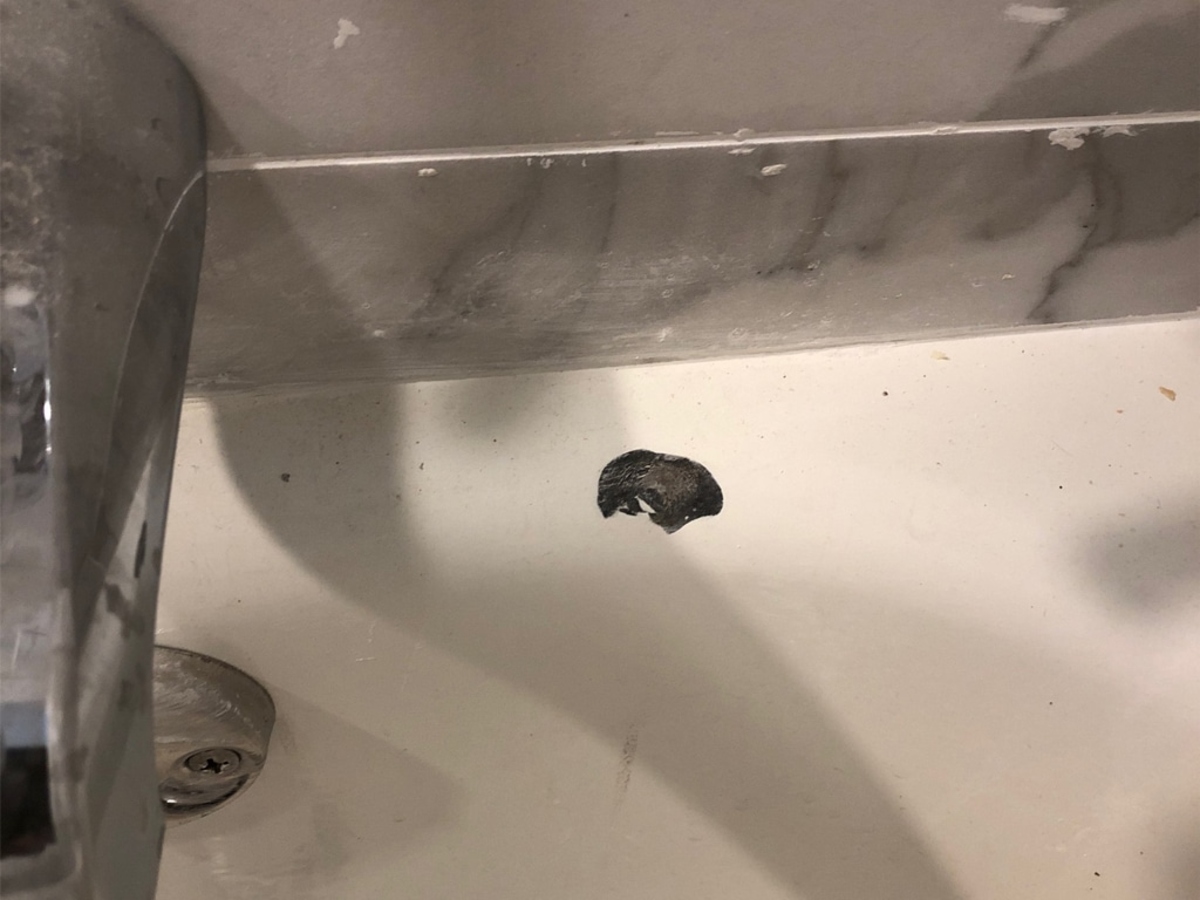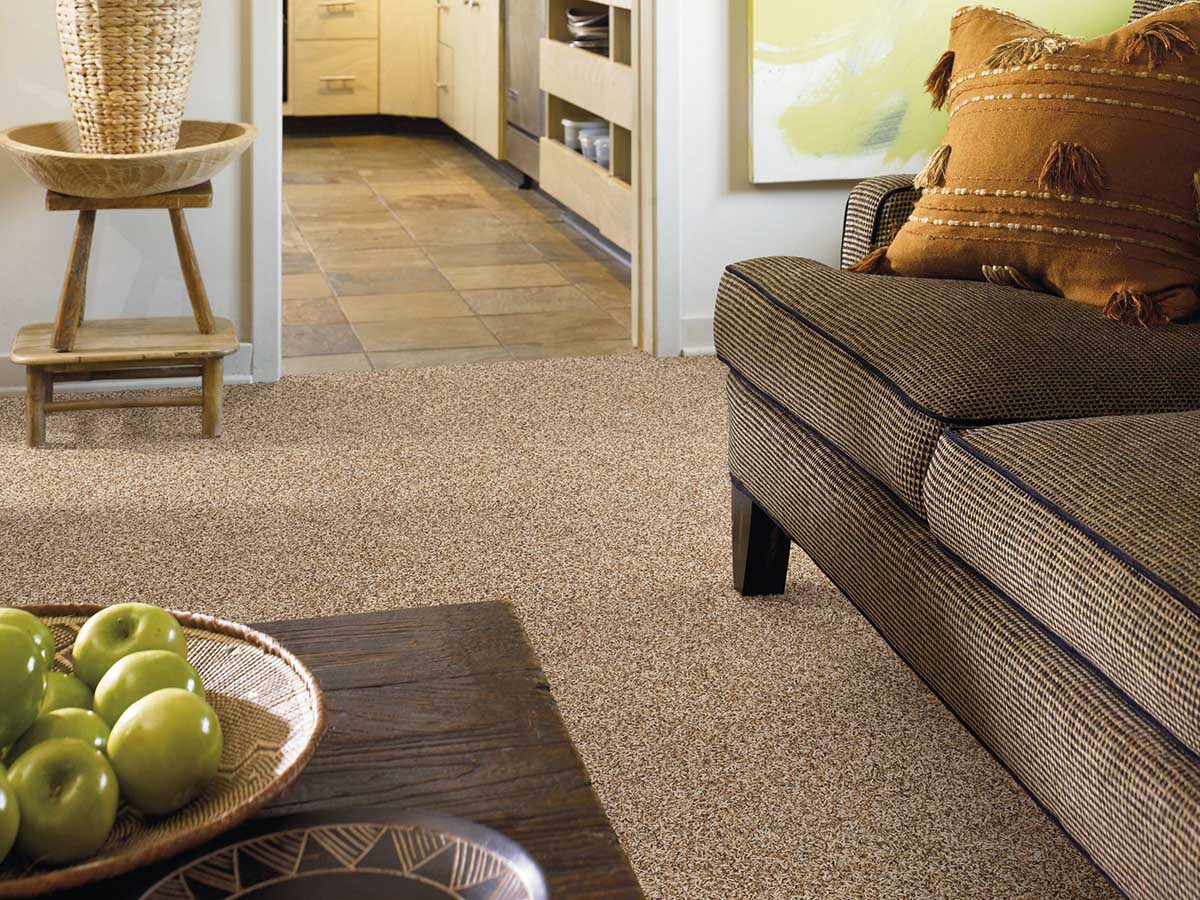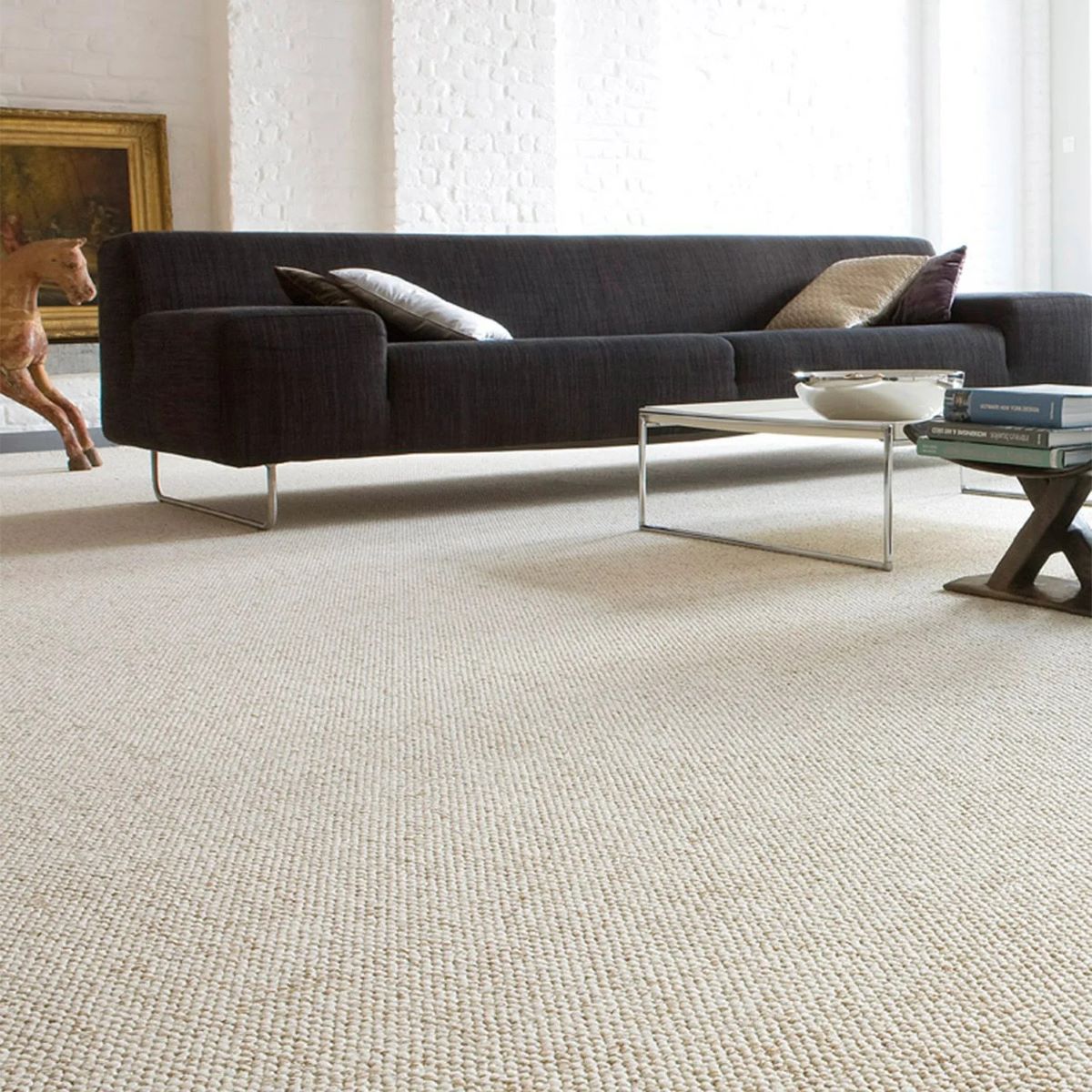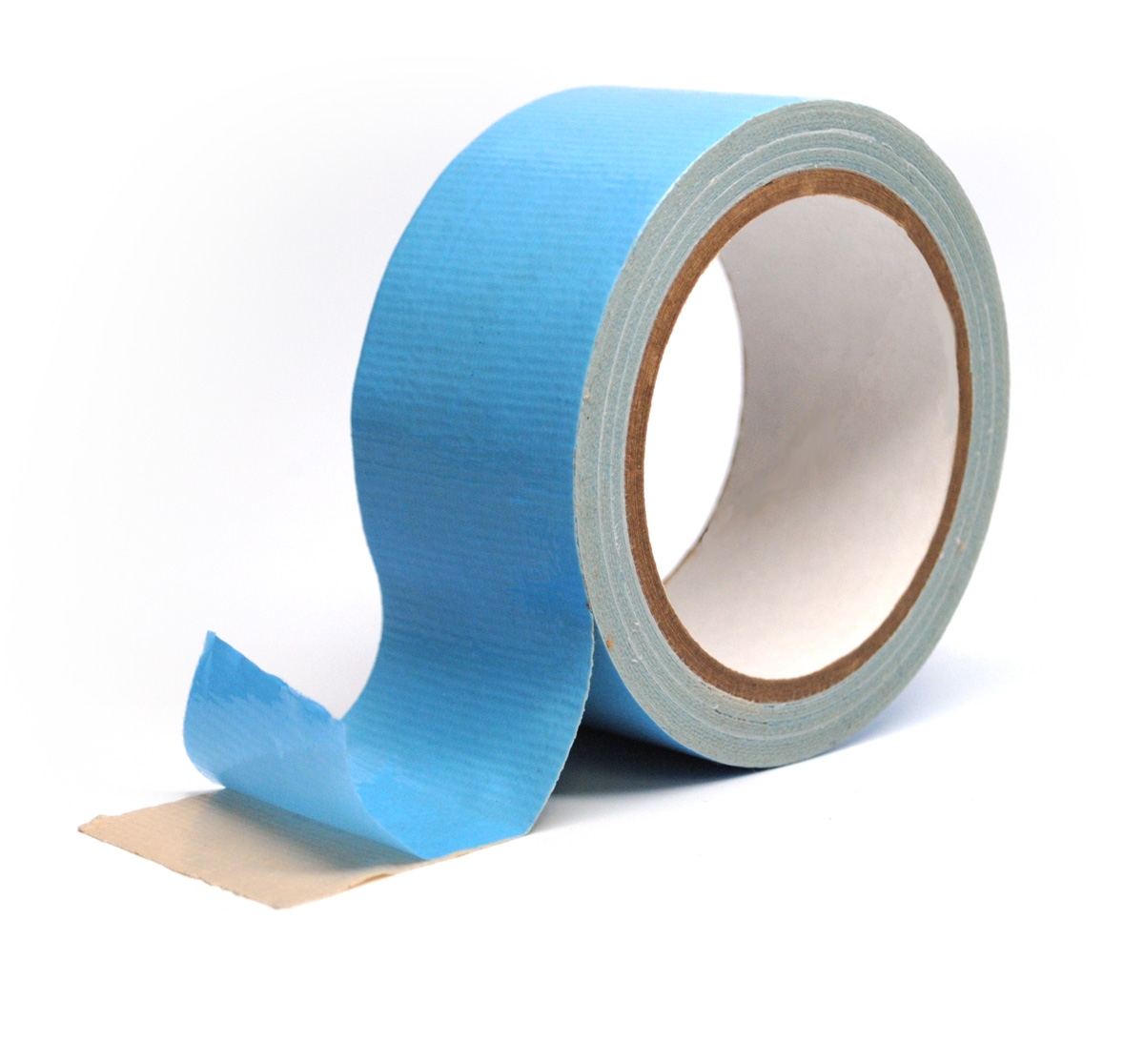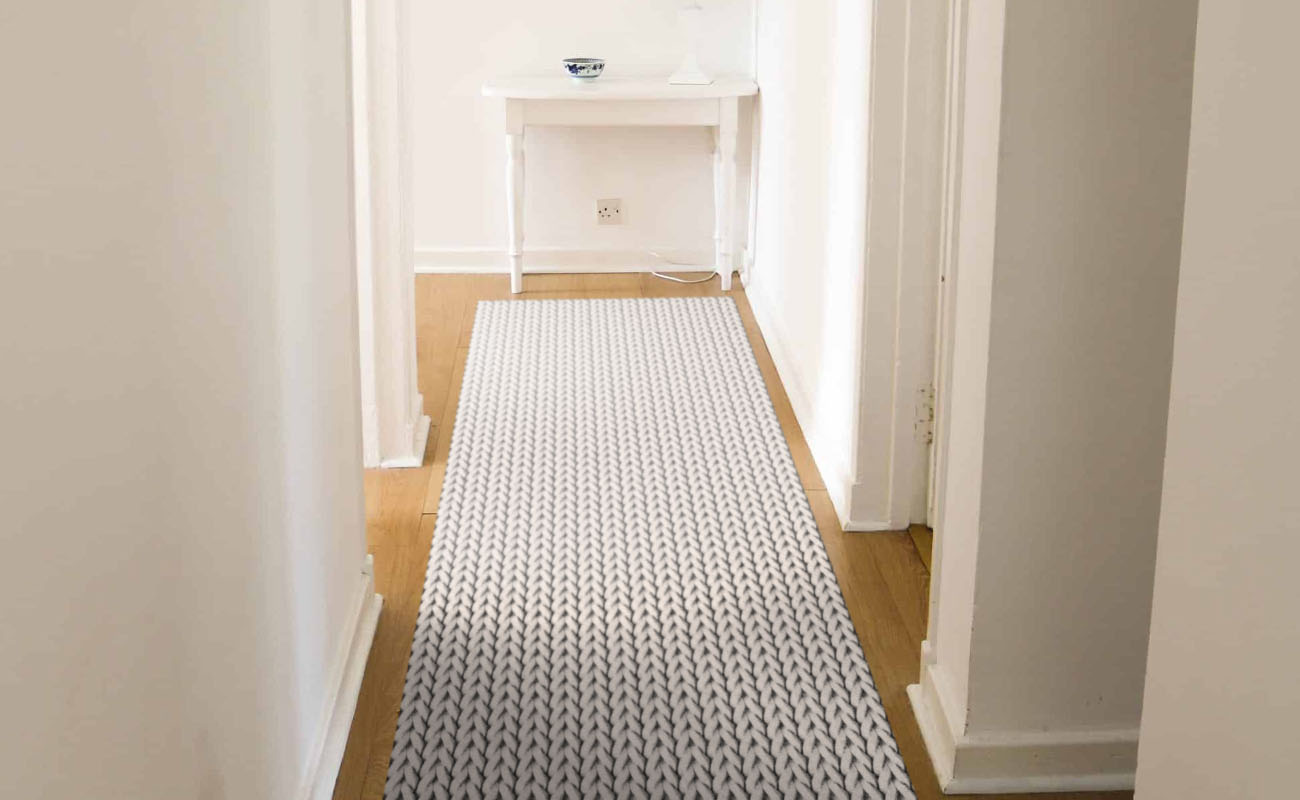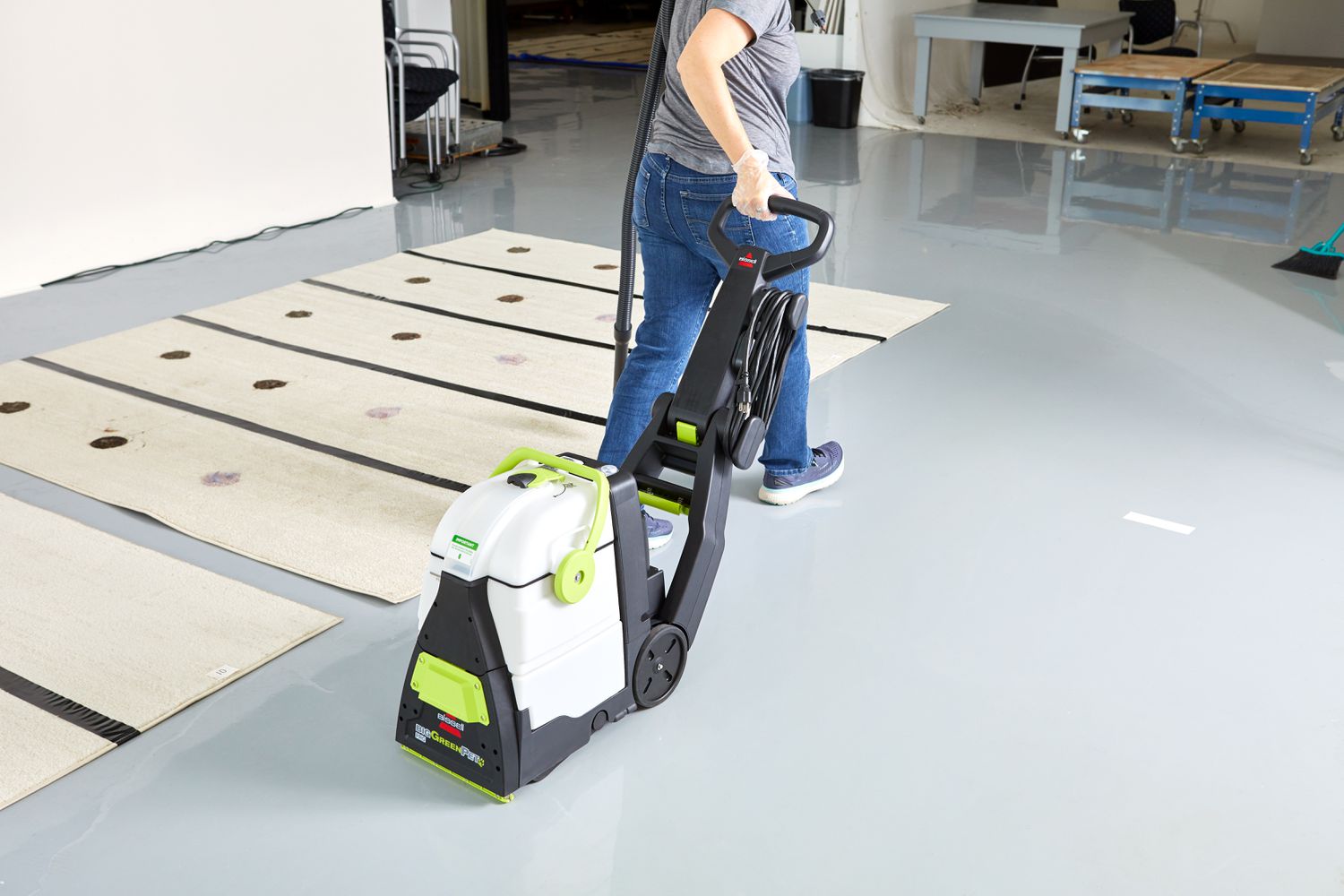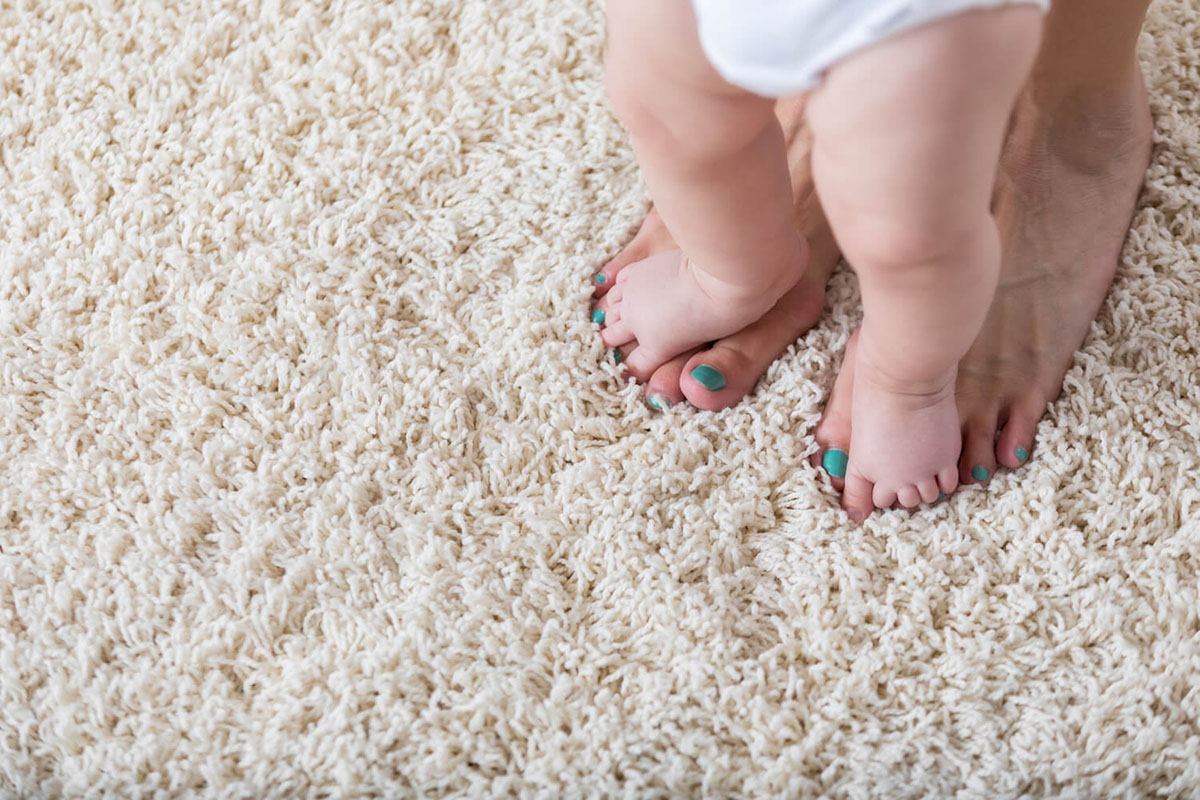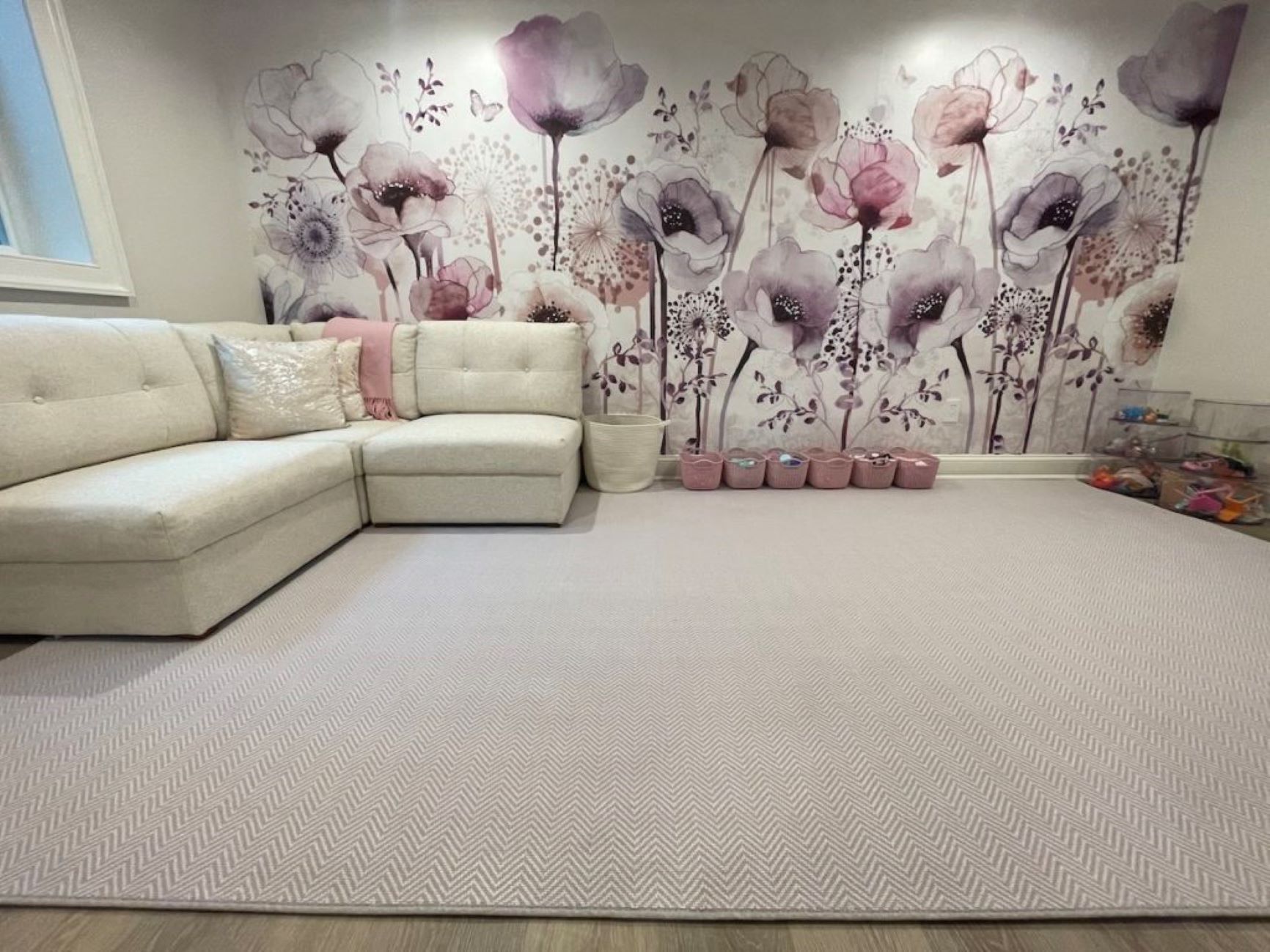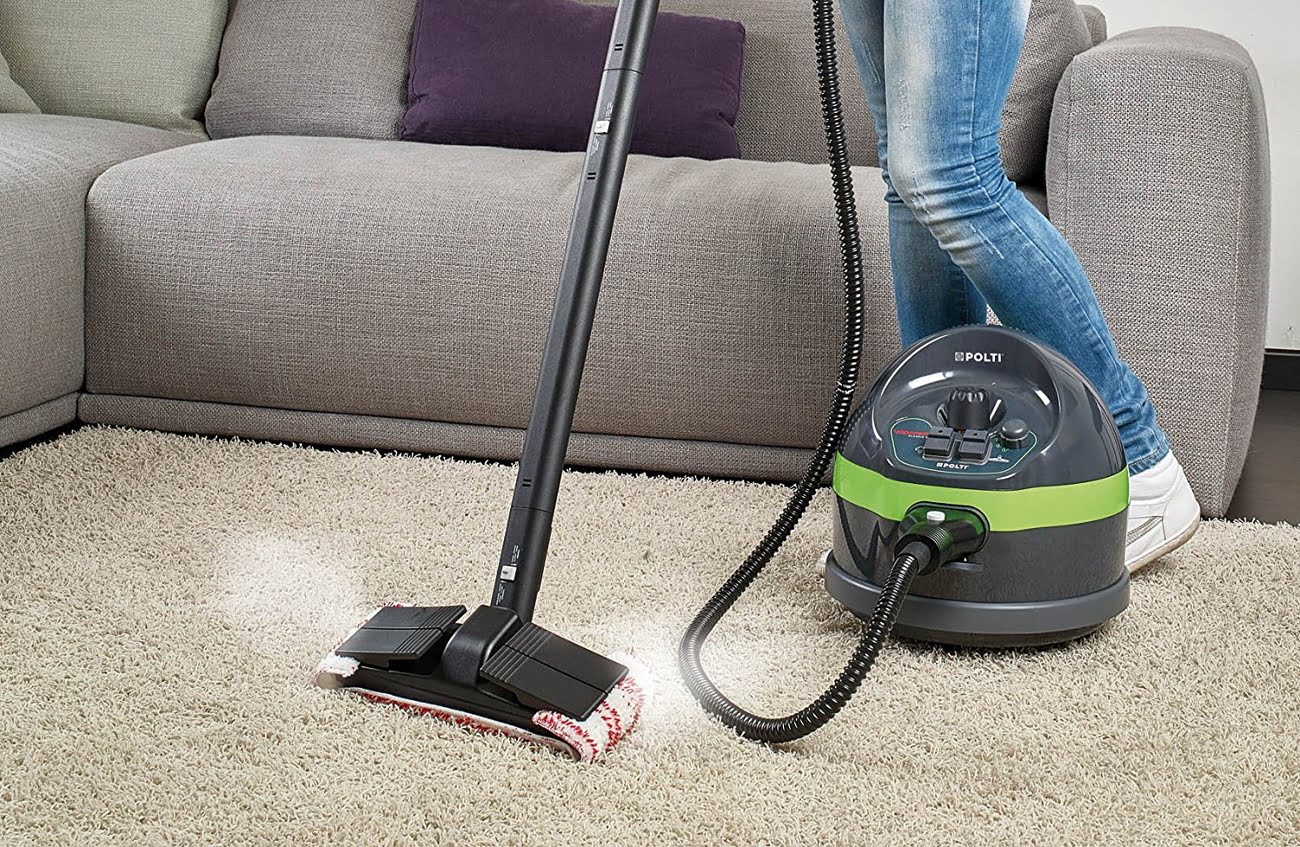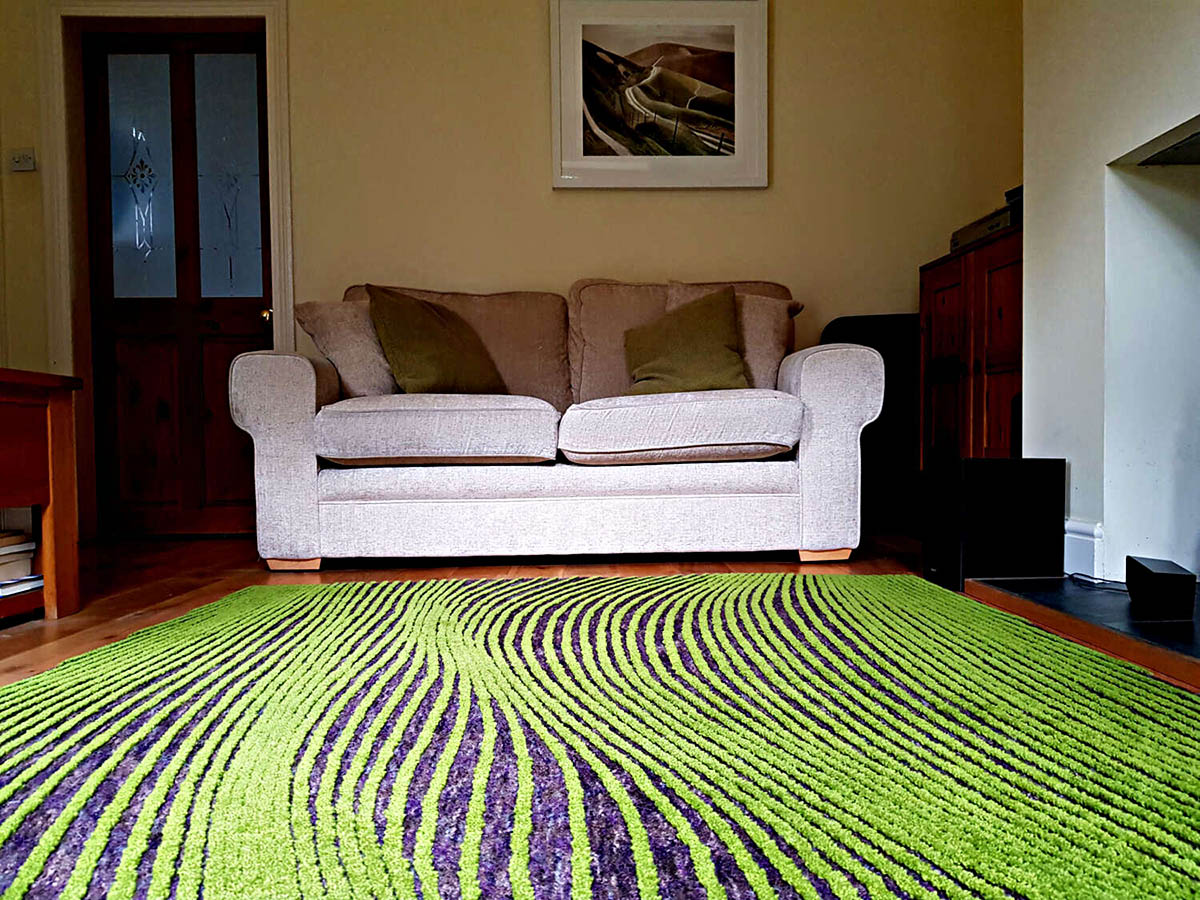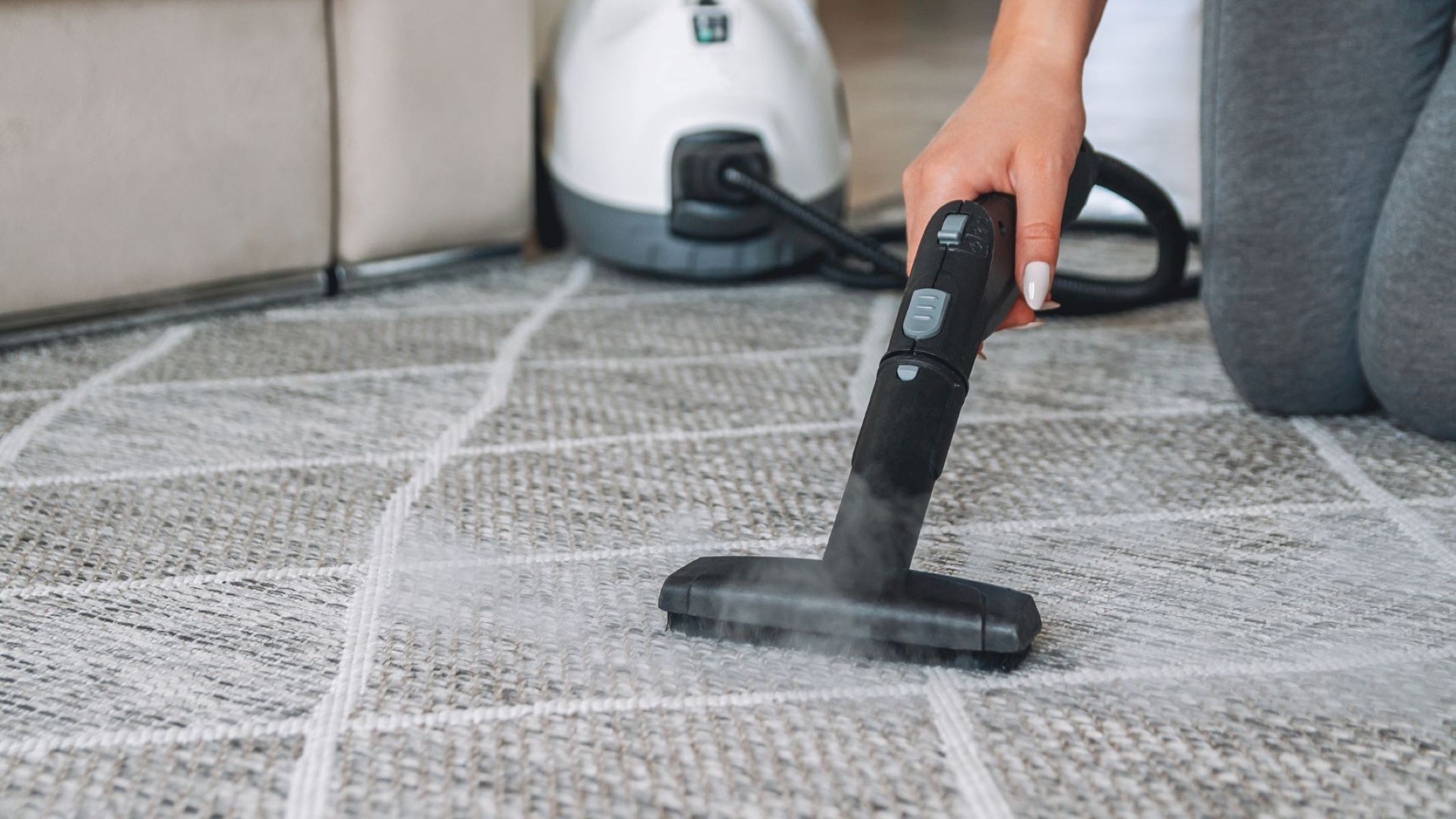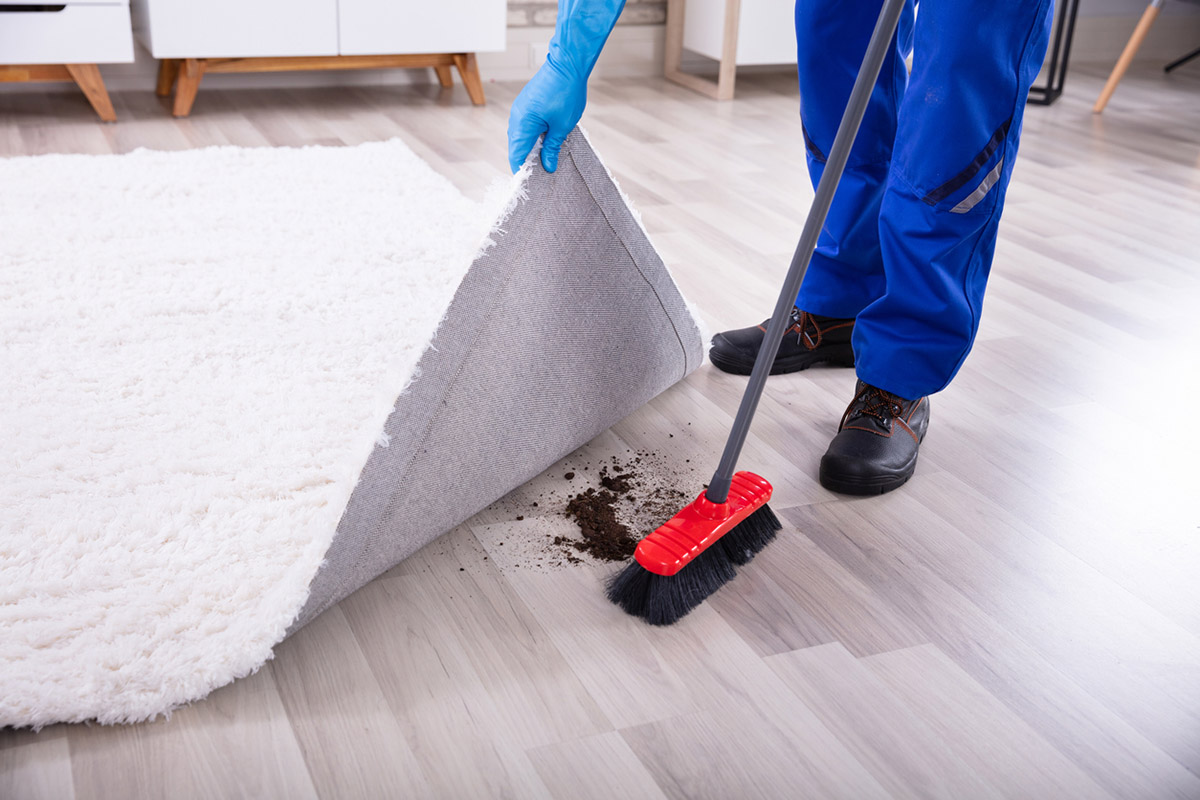

Articles
What Is Underneath The Carpet
Modified: October 28, 2024
Discover the hidden secrets and surprising facts about what lies beneath your carpet in our informative articles.
(Many of the links in this article redirect to a specific reviewed product. Your purchase of these products through affiliate links helps to generate commission for Storables.com, at no extra cost. Learn more)
Introduction
When it comes to home decor, carpets play a crucial role in adding style, comfort, and warmth to any space. From enhancing the aesthetics of a living room to providing a cozy feel under your feet, carpets are a popular choice for many homeowners. However, have you ever wondered what lies beneath that beautiful carpet?
Beyond the surface, there is a world of knowledge and craftsmanship involved in the creation, installation, and maintenance of carpets. In this article, we will unveil the secrets underneath the carpet, exploring the different types of materials, construction methods, common issues, maintenance tips, and more.
Understanding the intricacies of carpets can significantly elevate your appreciation for this everyday household item. Whether you’re in the market for a new carpet, want to update your existing one, or simply want to learn more about this fascinating subject, this comprehensive guide will provide you with valuable insights and tips.
So, let’s pull back the beautiful veil of your carpets and dive deep into the world that lies beneath.
Key Takeaways:
- Dive deep into the world of carpets to uncover the secrets beneath the surface. From luxurious wool to durable nylon, understanding materials, construction, and maintenance will help you make informed decisions for a cozy and stylish space.
- Proactive maintenance, prompt stain removal, and professional cleaning are essential for preserving the beauty and functionality of your carpets. Understanding repair and restoration techniques can revitalize your carpets, ensuring their longevity and pristine appearance.
Read more: What Goes Underneath The Mattress
Understanding Carpets
Carpets are textile floor coverings that are typically made of fibers, such as wool, nylon, polyester, or a combination of these materials. They come in various styles, colors, patterns, and textures, allowing you to customize your space according to your personal taste and decor theme.
One of the primary functions of a carpet is to provide insulation, both thermal and acoustic, as it acts as a barrier between the floor and the room. Carpets can help prevent heat loss during colder months, creating a cozy and comfortable atmosphere. Additionally, they absorb sound, reducing echoes and noise levels in a room.
Furthermore, carpets offer a soft and cushioned surface that enhances the comfort and safety of walking or standing for extended periods. This makes them an excellent choice for areas where there is frequent foot traffic, such as living rooms, hallways, and bedrooms.
From a design perspective, carpets can transform the look and feel of a room. Whether you prefer a minimalist, modern, or traditional aesthetic, there is a carpet style that can complement and elevate your interior design. They provide a visual anchor, tying together furniture, colors, and accessories, creating a cohesive and harmonious space.
It’s important to note that carpets are not limited to residential spaces. They are also widely used in commercial settings, such as offices, hotels, and retail stores. In these environments, carpets not only serve as a design element but also help dampen noise and improve the overall ambiance of the space.
To fully understand and appreciate carpets, it’s essential to explore the various materials used in their construction, as well as the different methods employed to create these beautiful floor coverings. In the following sections, we will delve deeper into both aspects, shedding light on the inner workings of carpets.
Types of Carpet Materials
Carpets can be made from various types of materials, each with its own unique characteristics and benefits. The choice of carpet material depends on factors such as budget, durability, and desired aesthetic. Let’s take a look at some of the most common carpet materials:
- Wool: Wool is a natural fiber that is known for its luxurious feel and durability. It is highly resilient, resistant to stains and dirt, and offers excellent insulation properties. Wool carpets are renowned for their softness and natural beauty, making them a popular choice for high-end homes. However, they tend to be more expensive compared to other materials.
- Nylon: Nylon is a synthetic fiber that is widely used in carpet manufacturing. It is known for its exceptional durability, resilience, and stain resistance. Nylon carpets are available in a wide range of colors and styles, making them a versatile option for any decor. They are also relatively affordable and easy to maintain, making them a popular choice for both residential and commercial spaces.
- Polyester: Polyester carpets are known for their softness, vibrant colors, and excellent stain resistance. They are often more affordable than wool or nylon carpets, making them a budget-friendly option. However, polyester is not as durable as other materials and may show signs of wear and tear over time. It is best suited for low-traffic areas or spaces where comfort and aesthetics are the main priorities.
- Polypropylene (Olefin): Polypropylene carpets, also known as olefin carpets, are highly stain-resistant and durable. They are resistant to fading, moisture, and mildew, making them suitable for areas prone to spills or high humidity. Polypropylene carpets are often used in outdoor spaces or basements. However, they may lack the luxurious feel and softness of other carpet materials.
These are just a few examples of the most popular carpet materials. Other options include blends of different fibers, such as wool and nylon blends, which combine the benefits of both materials. Additionally, eco-friendly options made from renewable sources, such as bamboo or sisal, are gaining popularity due to their sustainability.
When choosing a carpet material, consider factors such as durability, maintenance requirements, comfort, and budget. It’s also advisable to consult with a flooring professional who can guide you in selecting the material that best suits your specific needs and preferences.
Carpet Construction Methods
Carpet construction refers to the process of how the fibers are attached to the backing to create the finished carpet. There are different methods used in carpet construction, each offering its own set of advantages and characteristics. Let’s explore some of the common carpet construction methods:
- Tufted Carpets: Tufted carpets are the most common type of carpet construction. They are made by pushing yarn through the backing material and then securing it with adhesive or by looping the yarn through the backing and securing it with a layer of latex. This method allows for versatile patterns, colors, and textures. Tufted carpets are available in various pile heights and densities to suit different needs.
- Woven Carpets: Woven carpets are crafted on special looms using traditional weaving techniques. This construction method produces a high-quality carpet with intricate patterns and designs. Woven carpets are known for their durability and longevity. However, they tend to be more expensive due to the intricate manufacturing process involved.
- Needle-Punched Carpets: Needle-punched carpets are created by punching individual fibers through the backing material using barbed needles. This method mechanically interlocks the fibers, creating a dense and durable carpet. Needle-punched carpets are commonly used in commercial applications such as offices, hotels, and airports due to their excellent wear resistance and ability to withstand heavy foot traffic.
- Bonded Carpets: Bonded carpets, also known as peel-and-stick or modular carpets, are produced by gluing the carpet fibers to a backing material. These carpets often come in tiles or planks that can be easily installed and replaced. Bonded carpets are popular in commercial settings, as they allow for easy customization and quick installation.
In addition to the construction method, another factor to consider is the carpet’s pile, which refers to the height and density of the carpet fibers. Common pile types include cut pile, loop pile, and combination pile, each offering a different look and feel.
Understanding the construction method and pile type is crucial in selecting a carpet that matches your specific requirements. Consider factors such as durability, comfort, maintenance, and the style you desire. It’s always helpful to consult with a flooring professional who can provide you with expert advice and assist you in finding the perfect carpet for your space.
Common Carpet Issues
As much as we love carpets for their comfort and aesthetic appeal, they are not immune to certain issues that can arise over time. Knowing and understanding these common carpet issues can empower you to take proactive measures to prevent or address them. Here are some of the most prevalent carpet issues:
- Stains and Spills: One of the most common issues with carpets is stains and spills. Whether it’s a coffee spill, pet accident, or wine stain, these incidents can leave unsightly marks on your carpet. Promptly addressing stains by blotting or using appropriate cleaning solutions can prevent them from becoming permanent.
- Wear and Tear: Over time, carpets can show signs of wear and tear, especially in high-traffic areas. Prolonged foot traffic can cause the carpet fibers to flatten and lose their resilience. Regular vacuuming and rotating furniture can help distribute the weight and minimize wear in specific areas.
- Mold and Mildew: Moisture can be a breeding ground for mold and mildew growth in carpets. This issue can arise due to high humidity, water damage, or improper drying after cleaning. Regularly monitoring moisture levels, using dehumidifiers, and ensuring proper ventilation can help prevent mold and mildew from taking hold in your carpets.
- Allergens and Dust: Carpets can trap allergens and dust, contributing to poor indoor air quality. If you or your family members suffer from allergies or respiratory issues, regular vacuuming with a HEPA filter and periodic professional deep cleaning can help remove allergens and improve air quality.
- Carpet Odors: Over time, carpets can develop unpleasant odors due to spills, pet accidents, or stagnant moisture. Regular vacuuming, periodic deep cleaning, and using odor-absorbing agents or home remedies like baking soda can help eliminate or reduce carpet odors.
Being proactive in addressing and preventing these common carpet issues can extend the lifespan of your carpet and keep it looking its best for years to come. Regular maintenance, proper cleaning techniques, and prompt attention to spills and stains are key to preserving the beauty and functionality of your carpet.
If you encounter persistent or severe carpet issues, it’s recommended to seek the assistance of professional carpet cleaners or restoration experts who can offer tailored solutions to address specific problems.
Read more: How To Reinforce Stairs From Underneath
Proper Carpet Maintenance
Maintaining your carpets properly is essential to ensure their longevity, appearance, and overall cleanliness. By following a few simple maintenance practices, you can keep your carpets in tip-top shape for years. Here are some tips for proper carpet maintenance:
- Vacuum Regularly: Regular vacuuming is the foundation of carpet maintenance. Aim to vacuum high-traffic areas at least twice a week and the entire carpeted area at least once a week. This helps remove loose dirt, dust, and debris from the carpet fibers, preventing them from settling deep into the pile.
- Use the Right Vacuum: Invest in a high-quality vacuum cleaner that is suitable for your specific carpet type. Consider factors such as suction power, brush agitation, and filtration capabilities. If you have plush, deep-pile carpets, a vacuum with adjustable height settings and a beater bar or brush roll is recommended to effectively clean and groom the fibers.
- Address Spills and Stains Promptly: Accidents happen, and when a spill occurs, it’s crucial to act quickly. Blot the spill with a clean cloth or paper towel to absorb as much of the liquid as possible. Avoid rubbing, as it can spread the stain. Use appropriate cleaning solutions or consult a professional to remove stubborn stains effectively.
- Protect Carpets from Furniture: Heavy furniture can leave indents or cause damage to the carpet fibers. Use furniture pads or coasters beneath the legs of your furniture to distribute the weight and prevent indentations. Regularly move the furniture to avoid permanent markings.
- Rotate Furniture: Heavy foot traffic on certain areas of the carpet can cause uneven wear. To minimize this, periodically rearrange your furniture to distribute the weight and traffic across different areas of the carpet.
In addition to these maintenance practices, consider implementing preventive measures such as using entry mats to reduce dirt and debris from being tracked onto the carpet, and enforcing a strict no-shoes policy in carpeted areas.
It’s also important to schedule professional deep cleaning at least once every 12-18 months, depending on the level of foot traffic and other factors. Professional carpet cleaners have specialized equipment and knowledge to thoroughly clean, sanitize, and revitalize your carpets, ensuring their longevity and freshness.
By following these proper carpet maintenance tips, you can keep your carpets looking pristine and extend their lifespan, enjoying a comfortable and beautiful flooring surface for years to come.
When lifting a carpet, be prepared to find dust, dirt, and possibly stains underneath. Use a vacuum to clean the area before replacing the carpet to prevent any damage to the flooring.
Professional Carpet Cleaning
While regular vacuuming and spot cleaning are essential components of carpet maintenance, there comes a time when carpets benefit from a deep and thorough cleaning by professionals. Professional carpet cleaning goes beyond the surface, extracting deep-seated dirt, allergens, and contaminants to restore the cleanliness and freshness of your carpets. Here are some key reasons why professional carpet cleaning is highly recommended:
- Effective Removal of Stubborn Stains: Professional carpet cleaners have access to specialized equipment and cleaning solutions that can effectively remove even the toughest stains. Whether it’s a red wine spill, pet urine, or deep-set dirt, they have the knowledge and tools to tackle various types of stains without causing damage to the carpet fibers.
- Thorough Extraction of Dirt and Allergens: Over time, dirt, dust, allergens, and bacteria accumulate deep within the carpet fibers, which regular vacuuming alone cannot fully remove. Professional carpet cleaning methods, such as hot water extraction or steam cleaning, penetrate the carpet fibers, loosening and extracting dirt, allergens, and contaminants, leaving your carpets fresh and hygienic.
- Restoration of Carpet Appearance and Texture: Regular foot traffic, spills, and wear can dull the appearance and flatten the texture of carpets. Professional cleaning revives the fibers, restoring their natural plushness and resilience. Your carpets will look refreshed, and the colors will appear vibrant, enhancing the overall aesthetic of your space.
- Prevention of Mold and Mildew: If moisture becomes trapped within the carpet, it can create an environment conducive to mold and mildew growth. Professional carpet cleaning includes proper drying techniques to eliminate excess moisture, reducing the risk of mold and mildew development. This is particularly important in areas with high humidity or where water damage has occurred.
- Extension of Carpet Lifespan: Regular professional cleaning helps remove dirt, grit, and abrasive particles that can wear down the carpet fibers over time. By maintaining a clean carpet, you can extend its lifespan, saving you the cost of frequent replacements.
It’s recommended to schedule professional carpet cleaning at least once every 12-18 months, depending on factors such as foot traffic, pets, and environmental conditions. However, heavily used or soiled carpets may require more frequent cleaning.
When choosing a professional carpet cleaning service, look for certified technicians who use industry-standard equipment and follow proper cleaning protocols. Additionally, inquire about their cleaning methods, eco-friendly practices, and any guarantees or warranties offered.
By investing in professional carpet cleaning, you can ensure a deep and thorough cleaning that revitalizes your carpets, enhances their appearance, and creates a healthier environment for you and your family.
Removing Stains from Carpet
Accidents happen, and when spills or stains occur on your carpet, it’s important to address them promptly to prevent them from becoming permanent. Here are some tips and techniques for effectively removing stains from your carpet:
- Act Quickly: The key to successfully removing stains is to act promptly. As soon as a spill occurs, immediately blot the area with a clean cloth or paper towel. This helps absorb as much of the liquid as possible before it seeps deeper into the carpet fibers.
- Blot, Don’t Rub: When blotting the stain, avoid rubbing or scrubbing the carpet, as it can spread the stain and damage the fibers. Gently dab the stain from the outer edges towards the center to minimize spreading.
- Use the Right Cleaning Solution: Different types of stains require specific cleaning solutions. It’s important to use an appropriate solution for the stain you’re dealing with. For example, mild soap and water can be effective for food or beverage spills, while specialized stain removers are available for specific types of stains like pet urine or ink.
- Test in an Inconspicuous Area: Before applying any cleaning solution to the stained area, it’s advisable to test it in a small, inconspicuous spot of the carpet first. This helps ensure that the solution doesn’t cause color fading, bleaching, or other damage.
- Blot with Cleaning Solution: After testing, apply a small amount of the appropriate cleaning solution to a clean cloth or sponge. Gently blot the stained area, starting from the outer edges and working towards the center. Avoid excessive scrubbing, as it can damage the carpet fibers.
- Rinse the Area: Once the stain has been treated, rinse the area with clean water to remove any residue from the cleaning solution. Blot the area again with a clean cloth or sponge to absorb the excess moisture.
- Patience is Key: Some stubborn stains may require multiple treatment attempts. Be patient and persistent in your efforts, repeating the cleaning process if necessary. However, avoid using excessive force or harsh chemicals, as they can damage the carpet fibers.
- Consider Professional Help: If you are unable to remove a stubborn stain or if you’re dealing with a delicate carpet material, it’s wise to seek the help of professional carpet cleaners. They have the expertise, specialized cleaning solutions, and equipment to effectively treat and remove even the toughest stains.
It’s important to note that different types of stains may require different approaches and cleaning methods. Consulting stain removal guides specific to the type of stain or seeking professional advice can provide additional guidance.
By acting quickly, using the right cleaning solutions, and following proper techniques, you can successfully remove stains from your carpet and restore its pristine appearance.
Carpet Repair and Restoration
Over time, carpets may experience wear and tear, damage, or be in need of restoration to bring them back to their former glory. Whether it’s a small snag, a loose seam, or a more significant issue, carpet repair and restoration techniques can help extend the lifespan of your carpet and maintain its overall appearance. Here are some common carpet repair and restoration options:
- Patching: Carpet patching is a technique used to repair localized damaged areas, such as burns, stains, or holes. It involves cutting out the damaged section and replacing it with a matching piece of carpet. This method can seamlessly blend the patch with the surrounding carpet, making the repair virtually undetectable.
- Re-Stretching: Over time, carpets can develop wrinkles, bulges, or lumps due to improper installation, heavy foot traffic, or changes in temperature and humidity. Re-stretching involves pulling the carpet taut and re-securing it to the underlying floor. This process eliminates wrinkles and creates a smoother and firmer carpet surface.
- Seam Repair: If the seams of your carpet become frayed, separated, or damaged, seam repair can be performed to restore the integrity and appearance of the carpet. This involves rejoining the carpet edges, reinforcing the seam, and ensuring a secure and seamless connection.
- Color Restoration: Carpets can fade or discolor over time, especially in areas exposed to direct sunlight. Color restoration techniques, such as color blending or dyeing, can be used to revive the faded or discolored areas, bringing back the vibrancy and uniformity of the carpet’s color.
- Spot Cleaning and Stain Removal: Stubborn stains and spots that cannot be removed through regular cleaning methods may require specialized spot cleaning and stain removal techniques. Professional carpet cleaners have the knowledge and tools to treat and remove a wide range of stains, restoring the original beauty of your carpet.
- Carpet Edge Binding or Serging: The edges of carpets can start to unravel or fray over time. Carpet edge binding or serging involves securing the edges with binding tape or a serging machine, preventing further unraveling and ensuring a neat and finished look.
- Carpet Replacements: In some cases, damage or extensive wear may require a partial or complete replacement of the carpet. Professional carpet installers can help you select a new carpet that suits your needs, style, and budget, ensuring a seamless and professional installation.
It’s recommended to consult with professional carpet repair and restoration experts who have the experience and knowledge to assess the condition of your carpet and recommend the most suitable repair techniques. They can provide tailored solutions and ensure that the repairs are carried out with precision and expertise.
By addressing carpet issues promptly and investing in repair and restoration when needed, you can prolong the life of your carpet and maintain its functionality and aesthetic appeal for years to come.
Read more: Why Is My Mattress Wet Underneath
Carpet Installation Process
Installing a new carpet involves a systematic process that ensures a smooth and professional result. While carpet installation is typically best left to experienced professionals, it is helpful to understand the general steps involved. Here is an overview of the carpet installation process:
- Measurement and Planning: Before installation can begin, precise measurements of the area where the carpet will be installed are taken. This helps determine the amount of carpet needed and allows for proper planning, including any seams or patterns that need to be considered.
- Removing Existing Carpet: If there is existing carpet in the area, it needs to be removed before the new carpet can be installed. This includes stripping away the old carpet and padding, as well as ensuring the floor is clean and free of debris.
- Preparation and Repair: The subfloor is inspected for any damage or unevenness. Any necessary repairs, such as filling cracks or leveling the surface, are carried out to ensure a flat and stable base for the carpet installation. Additionally, baseboards or trim may need to be removed or adjusted to accommodate the new carpet.
- Padding Installation: Once the subfloor is prepared, a carpet pad is laid down. The padding provides cushioning and helps to extend the life of the carpet. It is cut to fit the dimensions of the room and is typically secured to the subfloor using adhesive or staples.
- Carpet Cutting: The carpet roll is unrolled, and the carpet is cut to fit the room dimensions based on the measurements taken earlier. Care is taken to ensure proper alignment and orientation of the carpet’s pattern, if applicable.
- Carpet Installation: The carpet is carefully positioned and stretched across the room. Power stretchers or other tools are used to ensure the carpet is securely and evenly stretched, reducing the likelihood of wrinkles or buckling. If necessary, seams are created and meticulously joined using specialized carpet seaming techniques.
- Trimming and Finishing: Excess carpet is trimmed along the edges of the room, leaving a clean and precise finish. Any necessary adjustments are made to ensure a proper fit around corners, obstacles, or doorways. Baseboards or trim that were previously removed are reinstalled or replaced.
- Cleanup and Final Inspection: After installation, the installers clean up any debris and vacuum the newly installed carpet. A final inspection is conducted to ensure that the carpet is properly installed, free of visible defects, and meets the expected level of quality.
It’s important to note that the carpet installation process may vary depending on factors such as the type of carpet, the complexity of the room, and the specific requirements of the manufacturer. Hiring professional carpet installers is recommended to ensure a seamless and professional installation and to avoid potential issues or mistakes.
By following a structured and careful installation process, you can ensure a beautiful and durable carpet that enhances the comfort and aesthetics of your space.
Choosing the Right Carpet for Your Space
When selecting a carpet for your space, it’s important to consider factors such as durability, style, comfort, and maintenance requirements. With numerous options available, finding the perfect carpet can seem overwhelming. Here are some key considerations to guide you in choosing the right carpet for your space:
- Carpet Material: Consider the different carpet materials available, such as wool, nylon, polyester, and polypropylene. Each material has its own characteristics in terms of durability, stain resistance, comfort, and price. Choose a material that aligns with your specific needs and preferences.
- Carpet Style and Pile: Determine the style and pile of carpet that suits your space and lifestyle. Cut pile carpets provide a soft feel and a luxurious look, while loop pile carpets are more durable and resistant to crushing. Combination pile carpets offer a mixture of both, providing the best of both worlds.
- Color and Pattern: Consider the color and pattern options that complement your overall decor theme and personal taste. Light-colored carpets can make a space feel open and airy, while darker-colored carpets can add warmth and coziness. Patterns can add visual interest and hide stains or wear and tear to some extent.
- Foot Traffic: Assess the level of foot traffic in the area where the carpet will be installed. High-traffic areas, such as hallways or living rooms, may require a more durable and stain-resistant carpet that can withstand heavy use. Low-traffic areas, like bedrooms, may prioritize comfort and luxury over durability.
- Maintenance and Cleaning: Consider the maintenance requirements of the carpet. Some carpets may require more frequent vacuuming, professional cleaning, or spot cleaning to maintain their appearance and longevity. If you have pets or young children, opting for a carpet that is resilient and easy to clean may be beneficial.
- Budget: Set a budget for your carpet purchase. Carpets come in a wide range of prices, so knowing your budget can help you narrow down your options. Keep in mind that investing in a high-quality carpet can pay off in the long run, as it tends to be more durable and long-lasting.
- Environmental Considerations: If sustainability is important to you, consider eco-friendly carpet options made from recycled materials or renewable fibers. Look for carpets with certifications such as Green Label Plus or Cradle to Cradle.
It’s advisable to visit carpet showrooms or consult with flooring professionals who can provide you with samples, answer your questions, and offer expert advice based on your specific requirements. They can guide you in finding the right carpet that balances durability, comfort, style, and budget for your space.
Remember, choosing the right carpet involves finding the perfect balance between functionality, aesthetics, and personal preferences. By considering these factors and seeking professional guidance, you can select a carpet that not only enhances the beauty of your space but also withstands the demands of everyday life.
Conclusion
Carpets play a significant role in enhancing the comfort, style, and overall ambiance of a space. From their construction and materials to their maintenance and installation, there is much to explore and consider when it comes to carpets. By understanding the intricacies and secrets that lie beneath the surface of a carpet, you can make informed decisions and ensure the longevity and beauty of your investment.
We’ve examined the different types of carpet materials, ranging from luxurious wool to durable nylon and budget-friendly polyester. Each material offers unique characteristics and benefits, allowing you to choose the best option for your specific needs and preferences.
The construction methods used in carpets, such as tufting, weaving, and needle-punching, determine their durability, appearance, and performance. By understanding these methods, you can select a carpet that suits your lifestyle and enhances your space.
We also explored common carpet issues, such as stains, wear and tear, and mold growth. Being proactive in addressing and preventing these issues, along with regular vacuuming and professional cleaning, can help maintain the beauty and functionality of your carpets.
When it comes to carpet maintenance and cleaning, implementing a regular routine of vacuuming, prompt stain removal, and professional deep cleaning can help extend the lifespan of your carpets and ensure a clean and healthy environment for you and your family.
If your carpets require repair or restoration, the various techniques we discussed, including patching, re-stretching, and color restoration, can revitalize your carpets and bring them back to their original condition.
When choosing a new carpet, factors such as material, style, durability, and maintenance requirements should be considered. By considering these factors and seeking professional guidance, you can choose the perfect carpet that suits your space, meets your needs, and reflects your personal style.
In summary, carpets are more than just a decorative element; they provide comfort, insulation, and a sense of coziness in any space. By understanding the complexities and secrets that lie beneath the carpet’s surface, you can make informed decisions about their selection, maintenance, and care, ensuring that your carpets remain beautiful, functional, and inviting for years to come.
Frequently Asked Questions about What Is Underneath The Carpet
Was this page helpful?
At Storables.com, we guarantee accurate and reliable information. Our content, validated by Expert Board Contributors, is crafted following stringent Editorial Policies. We're committed to providing you with well-researched, expert-backed insights for all your informational needs.
